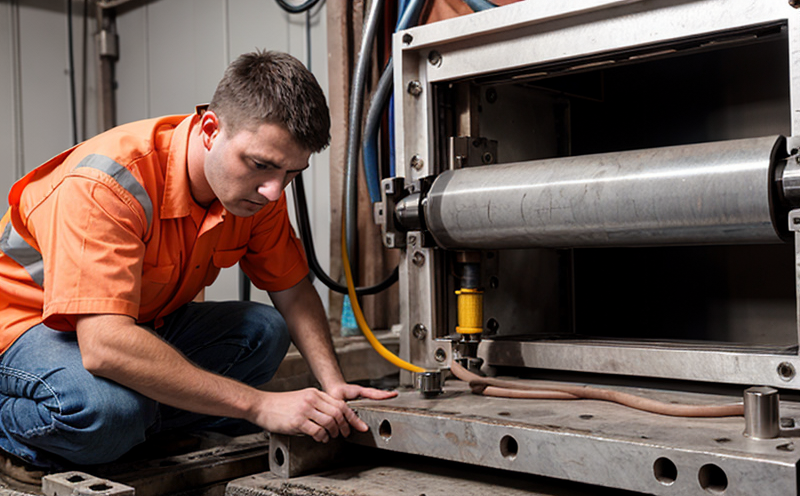IEC 60068 2 32 Free Fall Mechanical Safety Testing of Lighting Fixtures
The International Electrotechnical Commission (IEC) Standard IEC 60068-2-32 defines the procedure for conducting free fall tests on electrical and electronic equipment, including lighting fixtures. This test evaluates a fixture's ability to withstand impacts from a specified height when dropped onto a hard surface. Compliance with this standard ensures that lighting products are robust enough to endure potential drops during installation or transport without compromising safety.
The test involves carefully positioning the specimen at a specified height, typically 150 cm (60 inches), and then dropping it vertically onto a rigid anvil made of steel. The impact is recorded, and the fixture's integrity is inspected for any damage that could compromise its safe operation or durability. This rigorous testing process helps ensure product reliability and safety in real-world scenarios.
Compliance with IEC 60068-2-32 is particularly important for manufacturers of commercial lighting fixtures, street lamps, and other outdoor applications where the fixture may be subjected to rough handling or accidental drops. The standard also applies to interior lighting fixtures that could experience similar impacts during installation.
For accurate and reliable testing, it's crucial to follow the exact specifications outlined in IEC 60068-2-32. This includes precise drop height, anvil material, impact recording devices, and inspection criteria post-fall. The test setup should be conducted in a controlled environment with appropriate safety measures to prevent accidents.
Manufacturers often use third-party labs for this testing due to the specialized equipment required. These labs ensure that all tests are performed consistently across different products, providing accurate data for quality assurance and regulatory compliance.
| Test Parameter | Description |
|---|---|
| Drop Height | The specimen is dropped from 150 cm (60 inches). |
| Anvil Material | A rigid anvil made of steel. |
| Impact Recording Device | To measure and document the impact force during the test. |
| Inspection Criteria | The fixture's integrity is inspected for any damage that could affect safety or performance. |
Industry Applications
This testing procedure finds application in various sectors, particularly where lighting fixtures are subject to potential drops. Industries include:
- Construction and infrastructure projects requiring robust street lamps.
- Retail environments with commercial-grade lighting fixtures.
- Airports and other public spaces where lighting is exposed to rough handling.
- Oil and gas installations where safety is paramount.
Why Choose This Test
The IEC 60068-2-32 free fall test ensures that lighting fixtures meet stringent safety standards, enhancing reliability and longevity. By adhering to this standard, manufacturers can:
- Ensure product durability in challenging environments.
- Avoid potential recalls or returns due to product failure.
- Maintain a strong reputation for quality and safety.
- Comply with international regulations and standards.
This testing process also aids in identifying any design flaws that could lead to accidents, ensuring the highest level of safety for users. Compliance with this standard is essential for manufacturers aiming to meet regulatory requirements and gain market acceptance.
Use Cases and Application Examples
- Outdoor Lighting: Street lamps that are installed at elevated heights may experience accidental drops during installation or maintenance.
- Retail Spaces: Commercial-grade lighting fixtures used in retail environments can be subject to rough handling and transport.
- Airports: Lighting systems at airports must withstand harsh conditions, including potential drops during installation and maintenance.
- Oil & Gas Installations: Robust lighting is critical for safety in oil and gas installations where any failure could lead to significant risks.





